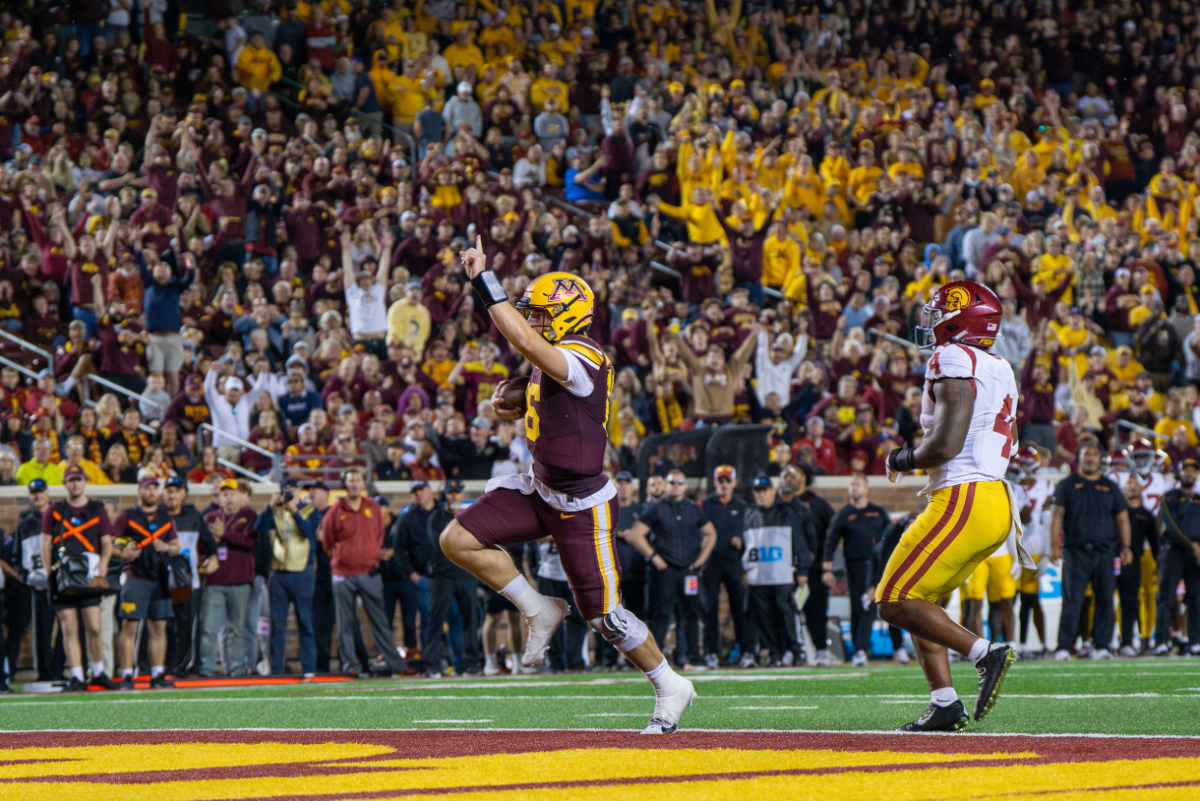Andrew Schroers doesn’t have an athletic scholarship, his name has never filled up a stat sheet and his picture has never been plastered across any team program. But he has significantly contributed to the University’s athletics program nonetheless.
Schroers, an American Studies junior, is one of several men who regularly practice with the University women’s basketball team.
The “practice squad,” as they’re called, practices against the women’s basketball team around four times a week, helping with every aspect of practice – from participating in warm-up drills, to simulating the team’s next opponent to full-on scrimmages against the team.
New members on the squad are usually recruited by friends and other players already on the team.
But the use of male practice players could soon be limited or outright banned.
In December 2006, the NCAA Committee on Women’s Athletics issued a position statement recommending the elimination of using male practice players throughout the NCAA.
According to the CWA statement, the use of male practice players “violates the spirit of gender equity and Title IX” – a federal law passed in 1972 that mandates gender equality throughout athletics.
The committee argues the practice is unfair because it forces bench players to stand on the sidelines and watch while the team’s starters practice against the male players.
Pam Borton, coach of the women’s basketball team, says there are other Title IX issues the NCAA should be more concerned with.
Borton said she views male practice players as indispensable tools to make her players better. Borton added that she tries to stay mindful of evenly focusing her attention on her players’ development.
“Every one of our kids gets developed and goes through drills,” Borton said. “Do they get to do as much as the top-eight players do? Probably not.”
Schroers said he didn’t agree with the argument that it’s taking opportunities away from the women either.
“I mean, obviously the starters are going to get more looks in the long run, for obvious reasons,” Schroers said. “But that would be true even if there was no scout team.”
The CWA’s position statement also refutes the notion that women need to practice against more athletic men in order to improve themselves. The report states that professional teams don’t have the ability to find practice squads better than the players on their roster, and the same holds true for most men’s college programs, too.
The report stated that men have to use other means, like weight training and nutrition, to become more athletic.
Brittany McCoy, a freshman guard on the team, said she doesn’t believe those reasons alone are enough that they should stop the men from practicing with the team.
“Not to knock our second string, but going up against the guys is so much more competitive,” McCoy said. “It just makes it more realistic and if anything, the boys are a little bit harder, so going into games it’s a little bit easier.”
Another argument for male practice players is that men can reduce the gradual fatigue on the players that occurs throughout the year.
“Girls on teams are playing anywhere from 30 to 40 minutes a night,” senior guard, Kelly Roysland said. “Then add to that full-fledged practices on both sides of the ball for two hours, and the wear and tear adds up. Some girls wouldn’t make it through the year.”
The report counters an NCAA study that cites expanding team rosters over the last decade in women’s sports as a failsafe against fatigue-related injuries. In 1990, the average women’s basketball squad had 13.4 players and by 2000 that number had expanded to 14.8, according to the report.
There is no clear consensus on the issue right now, with talks still ongoing, according to the CWA press release.
Although the practice has been debated in each division, Division III is the only one to have legislation on the table, and that proposal will not eliminate the practice but would limit it to a certain number of practices per week during the traditional season, according to Jennifer Kearns, an official with the CWA.
Divisions I and II are still considering the practice.
While the NCAA continues to hear both sides of the debate, Schroers said the practice team has afforded him an opportunity he would not have had otherwise: It has allowed him to play past his high school days.
“I definitely think of it as the next level,” Schroers said, “which I guess is the logical feeling when you practice at Williams Arena every day and have coach Borton yelling at you from the sidelines.”
-Sports editor Zach Eisendrath welcomes comments at [email protected].







